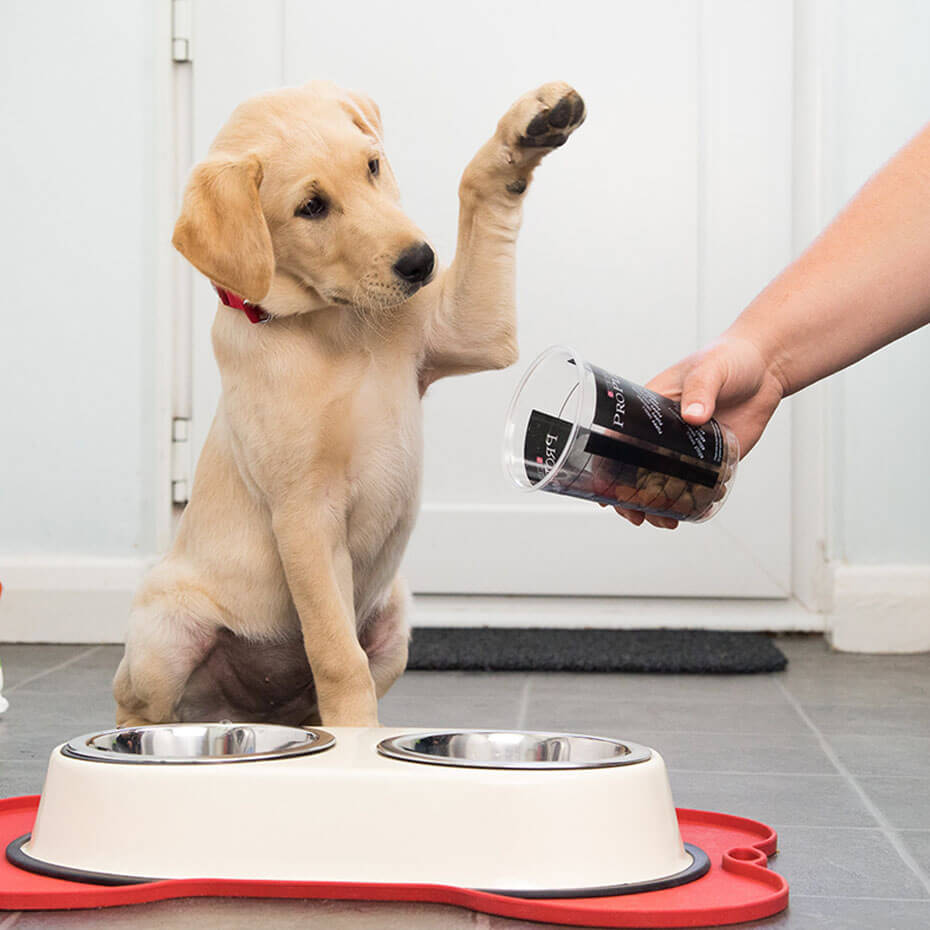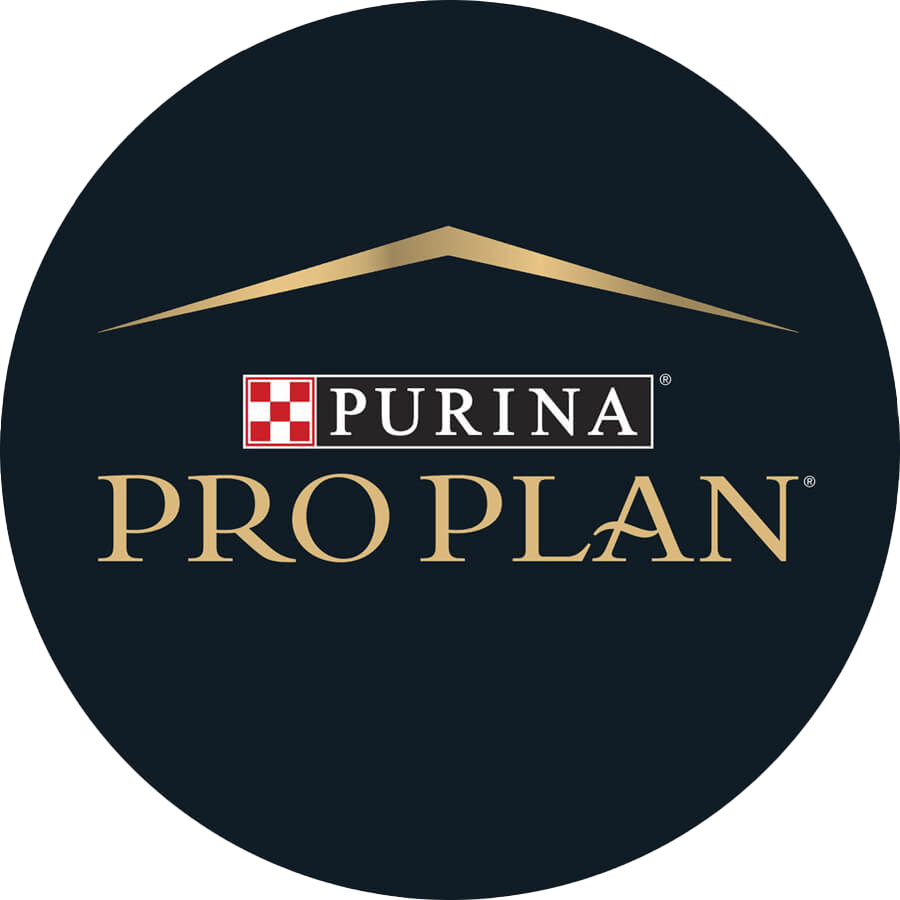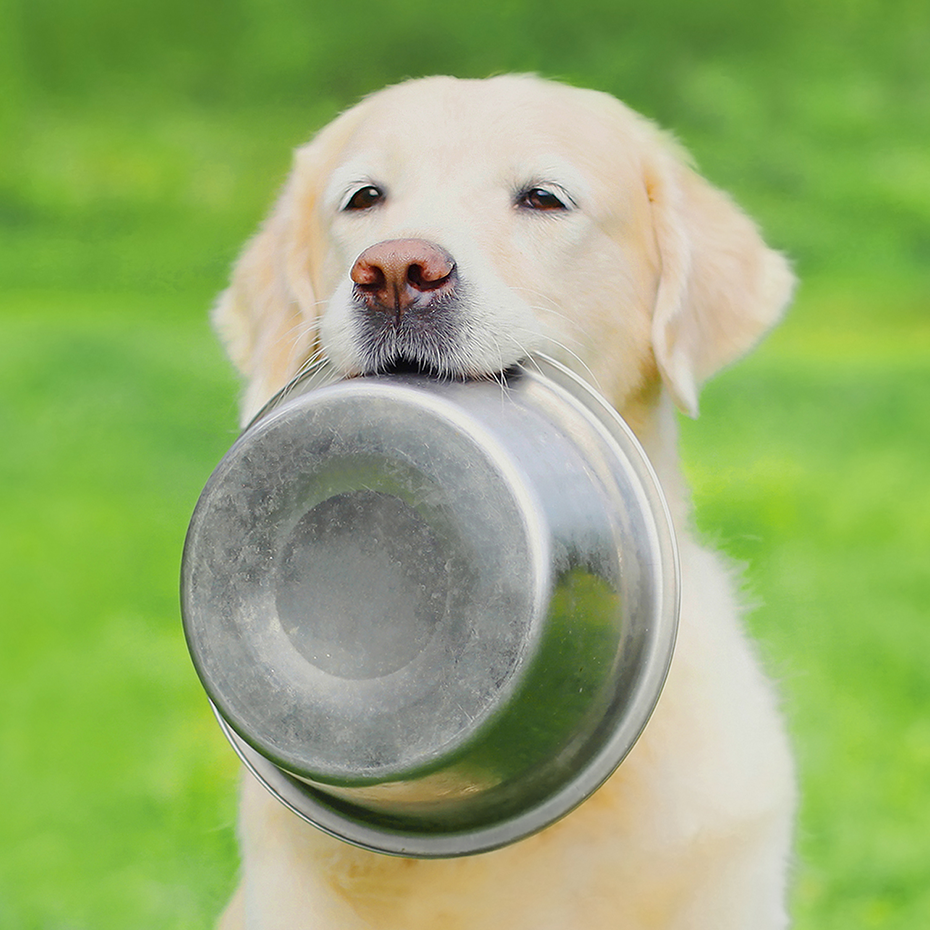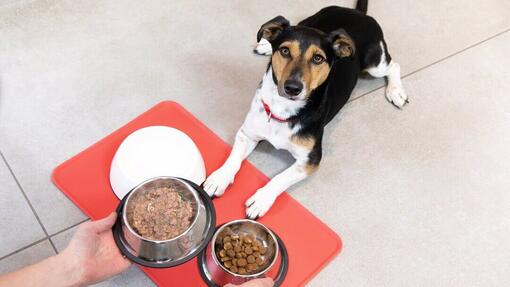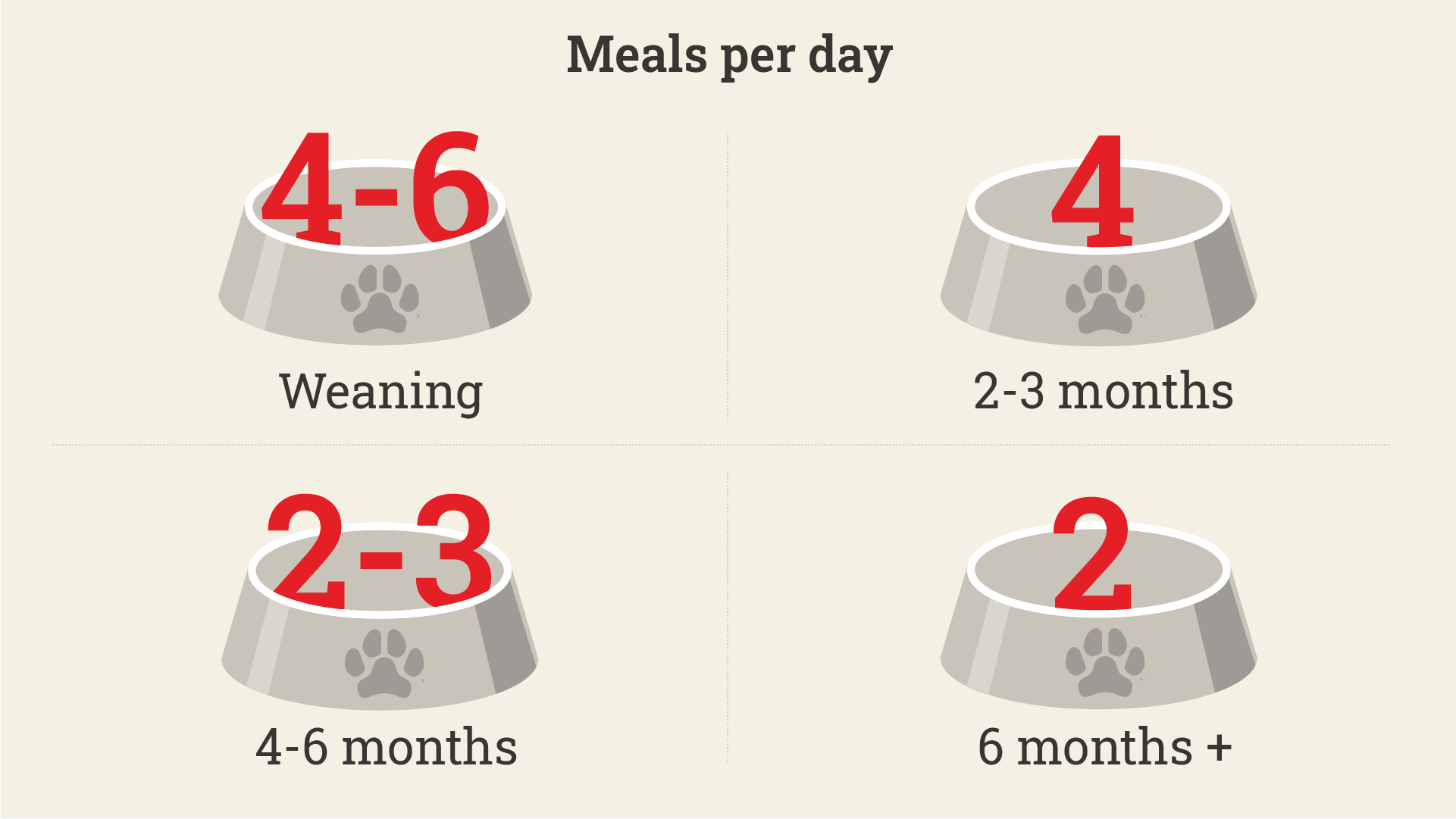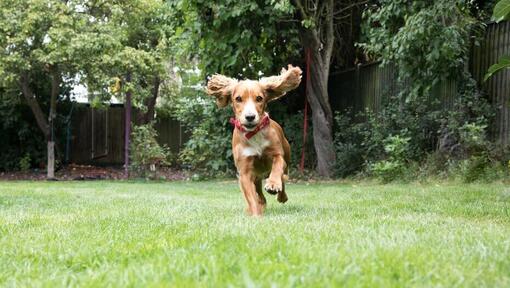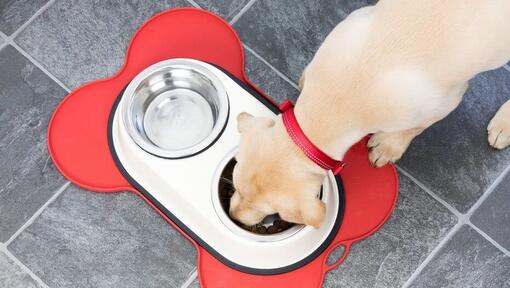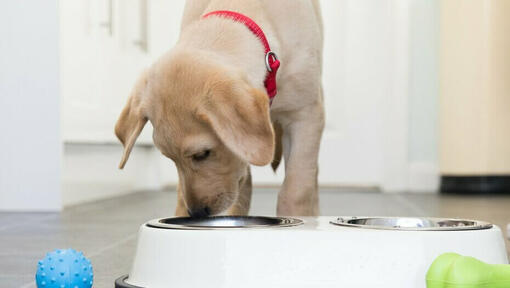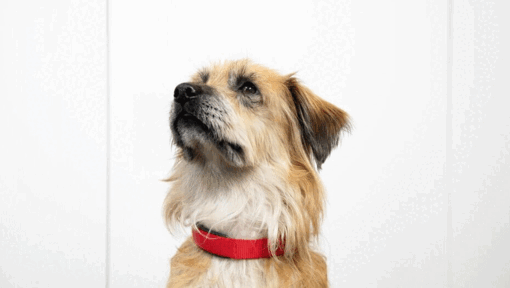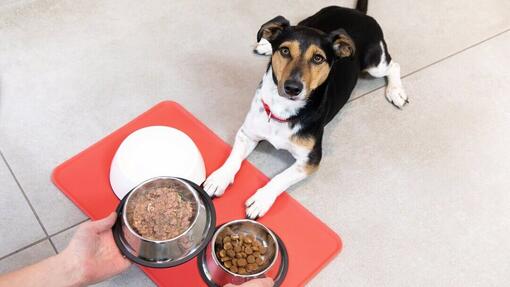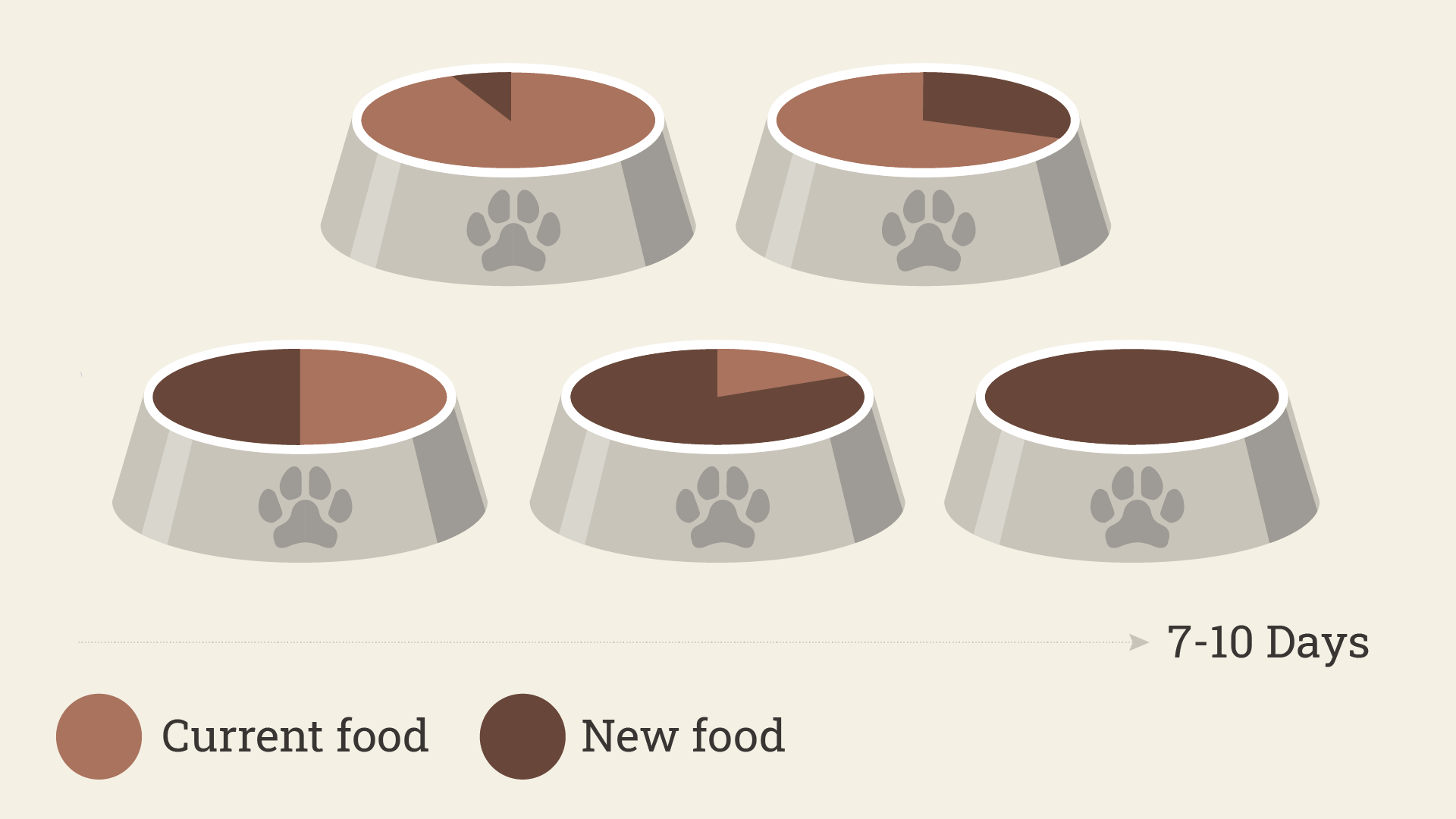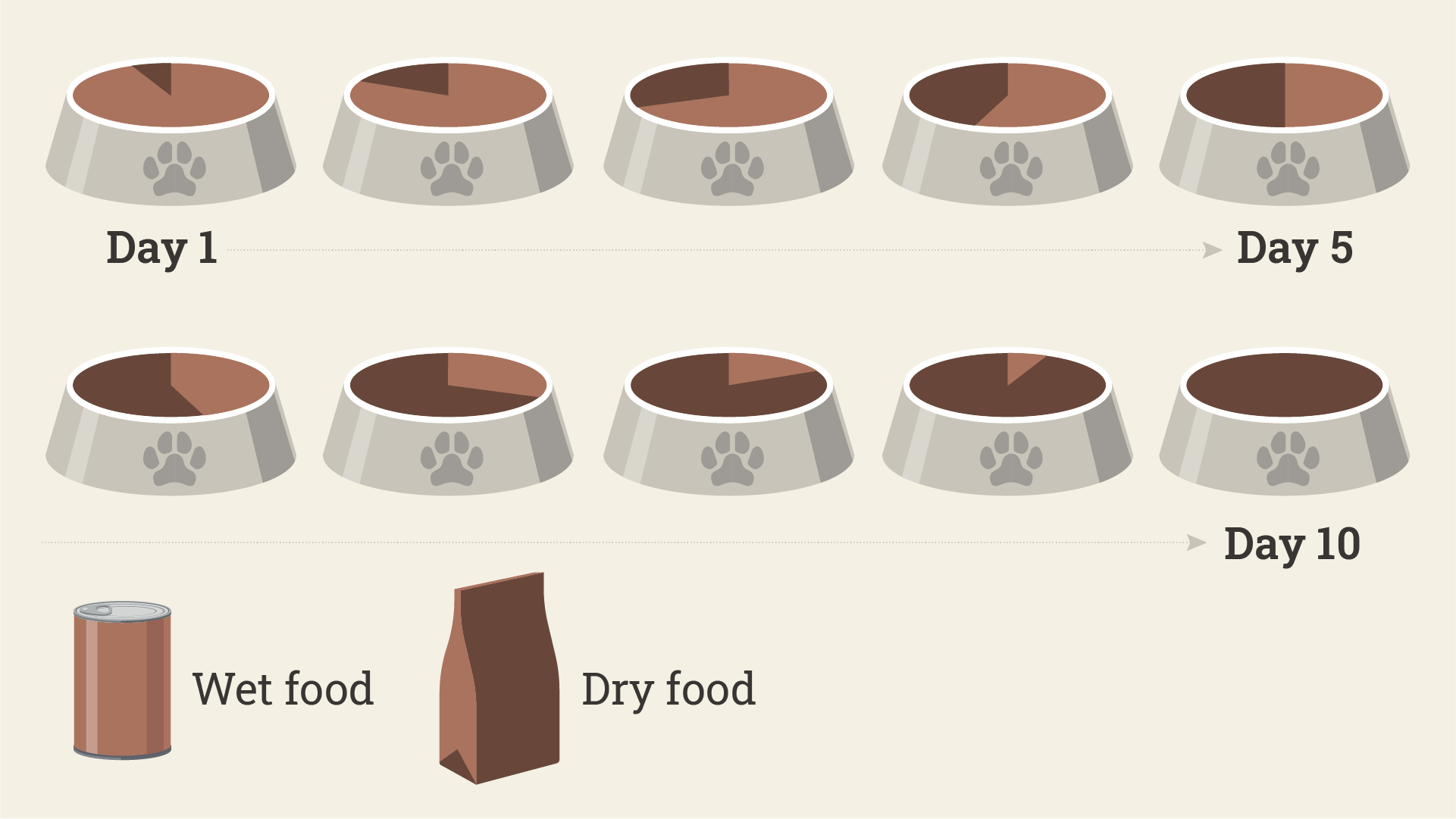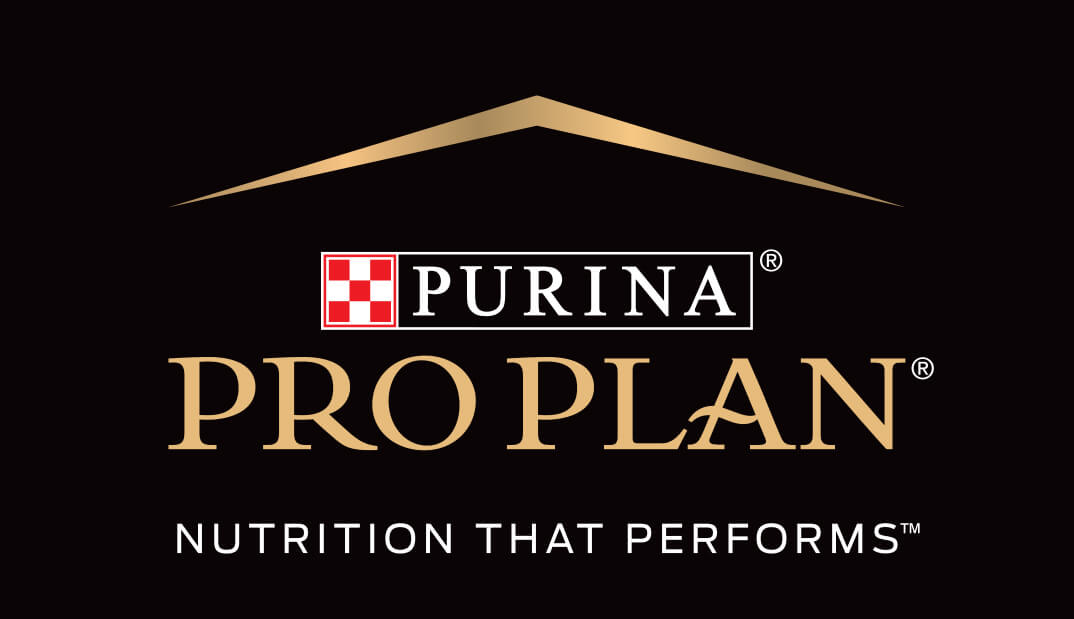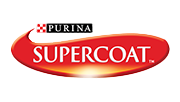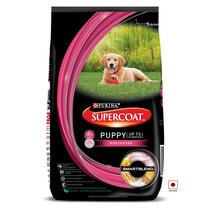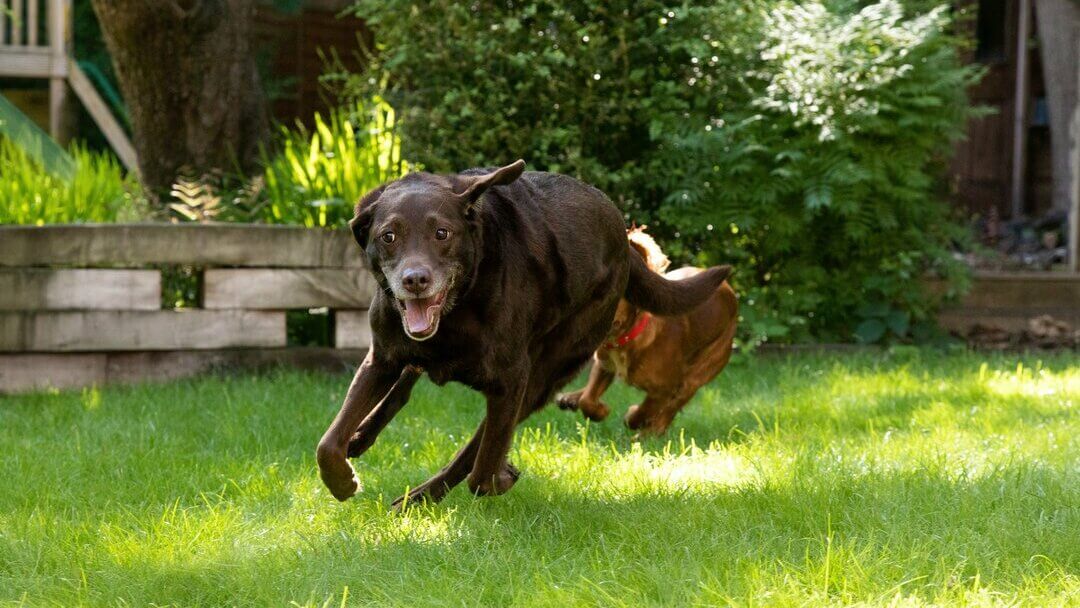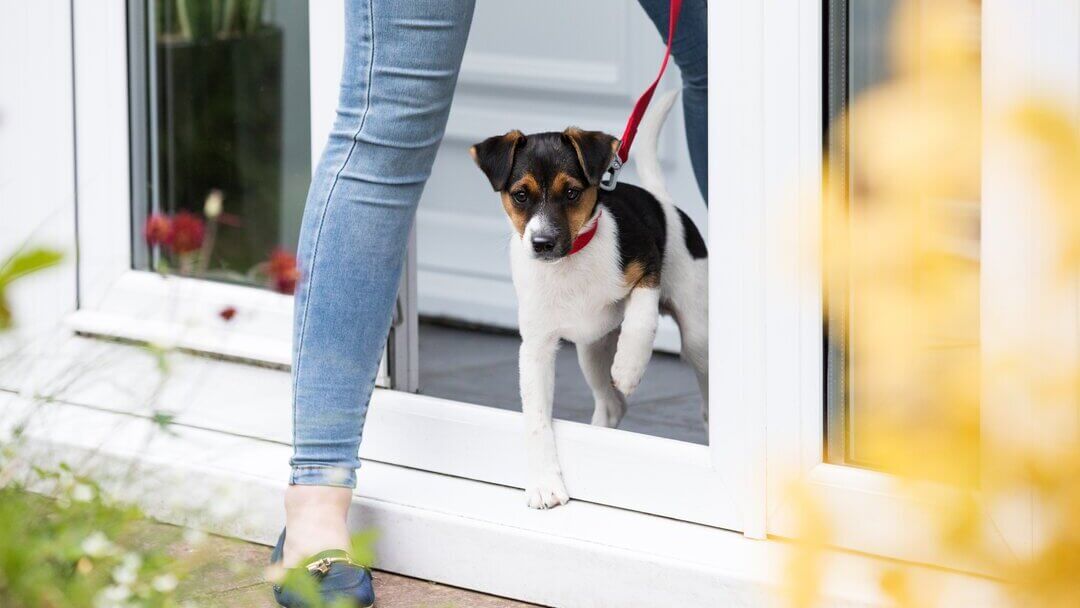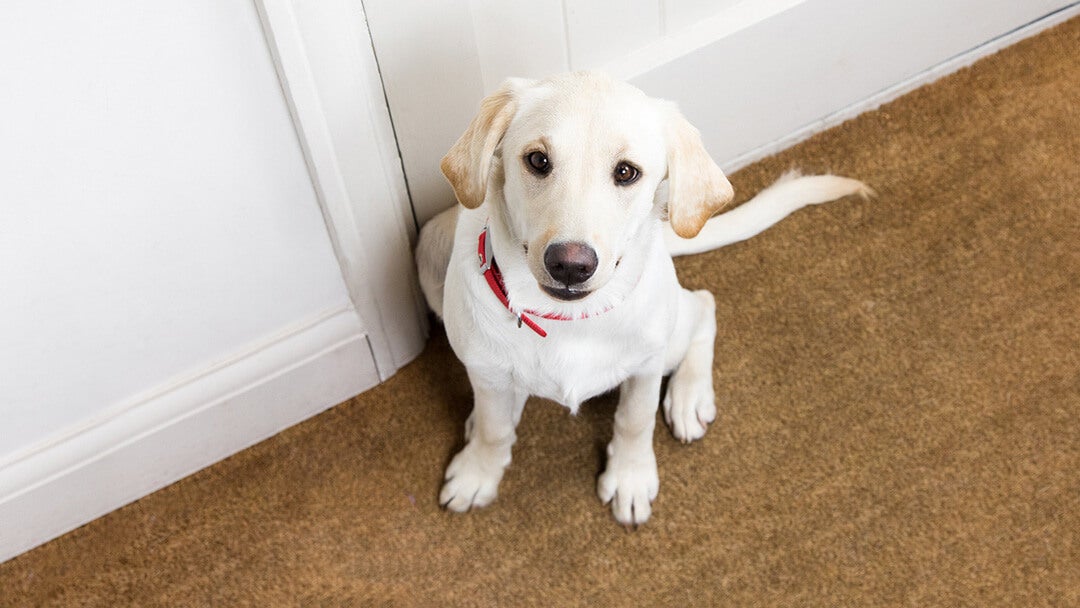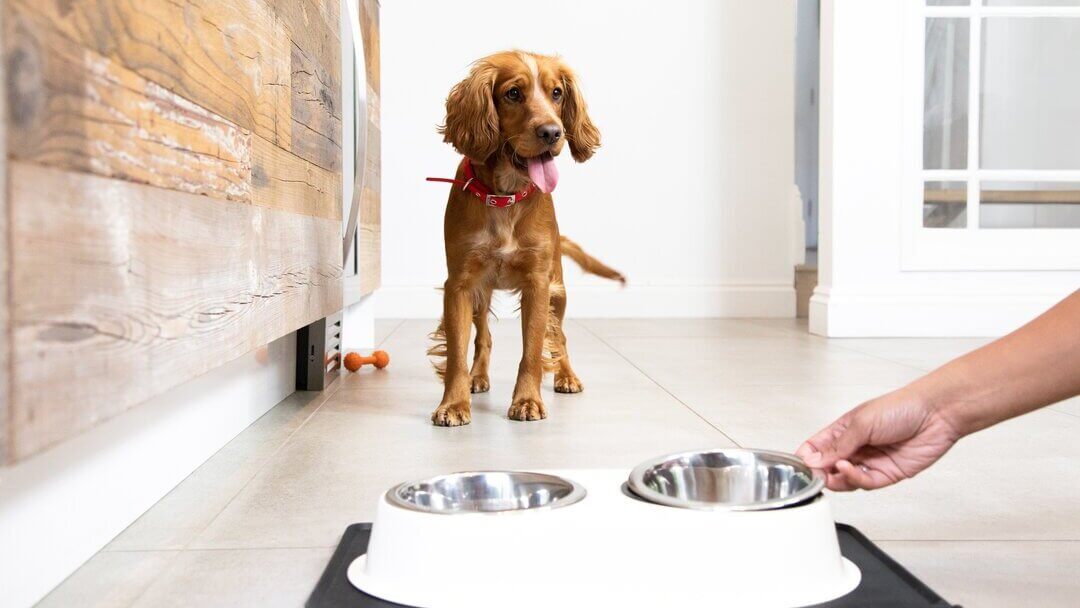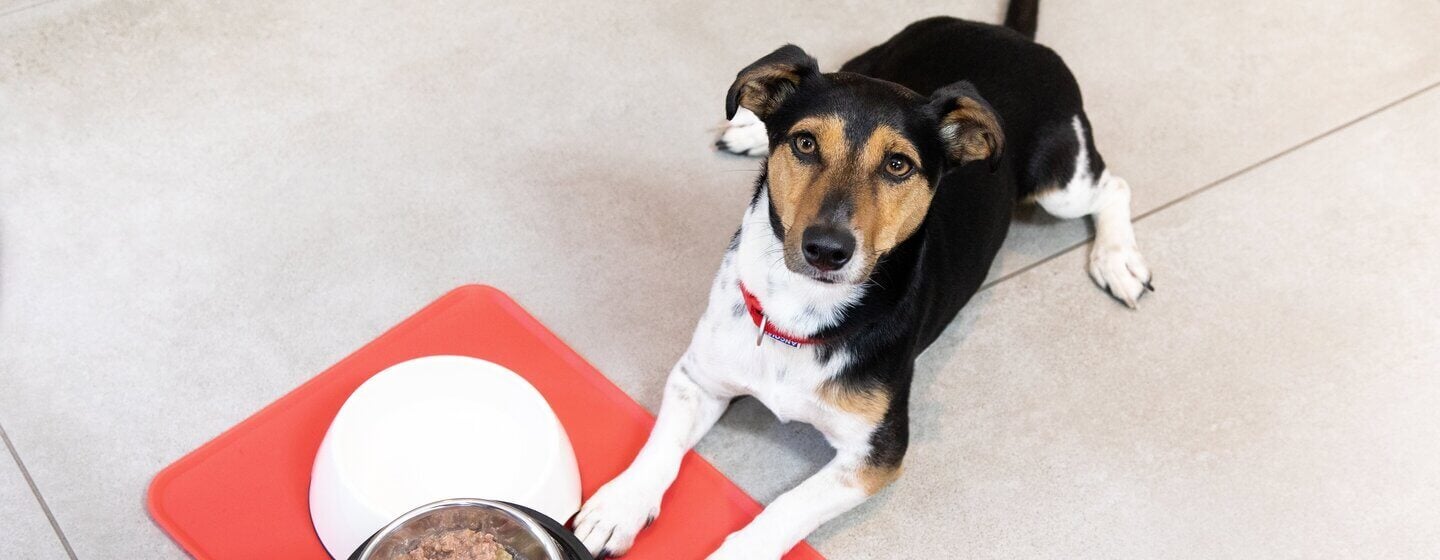
Everything you need to know about setting up your puppy with healthy eating habits to last them well into the adulthood.
Feeding your puppy
Your puppy seems small now, but they have a lot of growing up to do in a short space of time! In just 12 months (up to 24 months for larger breeds) they'll become fully-fledged adults.
In the meantime their bodies and brains have to develop incredibly quickly, and plenty of high quality puppy food helps them to get there. They definitely need it, as a healthy, energetic puppy can burn through up to twice as many calories as an adult dog!
Feeding your puppy is also an important part of taking care of their health and happiness. Once they are old enough to eat solid food – usually when they are six to eight weeks old – it’s time to introduce a diet specially formulated to meet their needs.
What to feed your puppy
Specially-formulated puppy foods are the ideal diet for the newest member of your family. This is because they are complete and balanced, which means they contain everything your puppy needs to help them grow up healthily. There’s no need for extra supplements or pieces of human food – in fact, these might do more harm than good, no matter how insistently they show you their puppy-dog eyes!
Here is what to look for in the best puppy food:
Puppy food is usually higher in calories than adult dog food, as puppies need a lot of energy for all the growing they have to do.
Puppy foods tend to contain extra protein to support the healthy development of their organs as they grow.
Higher levels of essential nutrients like calcium, magnesium, iron, zinc and vitamin D are essential in the development of strong teeth and bones.
Made in smaller kibble sizes to make it easier to chew and swallow, puppies often love crunching their dry food up, and will happily eat their meal all in one go.
How much to feed your puppy
Very often, a puppy will have eyes bigger than their belly! To get the balance right between what they need and overfeeding, give them small amounts of puppy food on a frequent basis.
The correct amount depends on their age, size and any advice given to you by your vet. Try starting with a tablespoon of food about five times a day while your puppy is still feeding from mum.
Here is a guideline for how much to feed your puppy:
- From starting to offer food to weaning (usually two months) - 4-6 meals a day.
- From two to three months - 4 meals a day.
- From four to six months - 2-3 meals a day.
- Over six months - 2 meals a day (depending on breed).
Don't be tempted to overfeed your puppy as too much could either upset their tummy or put pressure on their frame if they gain too much weight in a short period of time. Neither of these are good for your puppy’s health, so take care when planning their meals.
Always read the feeding instructions on their puppy food packaging carefully – they should give you a good starting point. The exact amount that you should feed your puppy can vary depending on their age, breed, any medical conditions and how energetic they are – more playful puppies will burn more energy, so need more food for fuel! Use our body condition tool to measure your puppy and make sure that they’re growing properly and aren’t under or over weight.
Weighing your puppy regularly will help you to make sure that they’re the right weight for their age, size and breed. You can do this at home, or if you’re unsure how, ask your vet to show you or do it for you during a check-up.
It’s better for younger puppies to eat little and often, as this won’t overwhelm their developing digestion – no matter how enthusiastic they are about finishing their bowl of food!
Puppy feeding & exercise
Avoid feeding immediately before or after a session of puppy exercise. Instead, it's best to allow an hour to pass between feeding and activity.
It can be a good idea to get your puppy into an early routine of having a rest straight after they eat to avoid the risk of tummy upsets or possibly even a more serious condition, particularly found in large and giant breeds, where their stomach can swell and possibly twist.
This is called gastric bloat (and torsion), and is a serious medical condition that requires urgent veterinary attention.
Where to feed your puppy
Here are some guidelines for finding the perfect spot to feed your puppy.
• Choose a quiet place
Make sure you feed the puppy away from the hustle and bustle of a busy house, where they can dig in, free from interruptions.
• Choose a surface that can be easily cleaned
Place the food on a tiled floor or a feeding mat, and always serve the puppy food in a clean bowl.
• Keep children away from your puppy while they’re eating
This will help avoid them bolting their food or getting protective over their meal. If you have other dogs in the house, feed them at the same time, but apart, to avoid fighting and food stealing!
How to feed your puppy
As well as what to feed a puppy, it’s important to consider how to give food to them.
Wet puppy food is best served at room temperature, as it smells more attractive and is easier to digest.
If you store the food in the fridge, remember to remove it an hour or so before meal times. It’s fine to microwave wet food for a short time to warm it through, but make sure that it’s only to room temperature and never hot.
While wet food goes stale quickly if left out, dry puppy food will last during the day and won’t spoil. Most puppies like to crunch on their dry food, but if yours prefers it moistened, or there’s a medical reason to avoid hard food, leave the puppy food in a little water for a few minutes before serving. As crunching dry food also helps to remove plaque, you might want to add a regular dental treat to your dog’s diet if they prefer to have their dry food moistened. Just remember to take these treats into consideration with their daily calorie intake.
What to feed puppies as they grow bigger
As your puppy grows bigger, so will their appetite. To give them the extra energy they need to support fast bursts of growth and build up muscle mass, you’ll have to increase the amount you feed your puppy
Depending on their breed, a six-month-old puppy can require up to twice the daily calorie intake of a two-month-old! As a general rule of thumb, increase portion sizes gradually over the first 12 months, after which most puppies can be moved on to adult food. You should always check with your vet before increasing or decreasing meal sizes as puppies will differ in their caloric needs based on their size, with larger breeds moving onto adult food later, at about 18 to 24 months.
What not to feed your puppy
Puppy dog eyes are called that for a good reason – they know exactly how to get what they want, especially when it comes to begging for more food! If your puppy is going to maintain a healthy balanced diet, try your best to ignore their pleas for table scraps and titbits.
A favourite toy, a walk or a game is a great substitute!
If you do occasionally give in, treats should never account for more than 10% of your dog's total diet, otherwise you risk upsetting the value of a balanced pet food.
Also, be aware there are some foods to stay clear of, such as never feeding your puppy raw meat. To reduce the risk of food poisoning, kill any bacteria by cooking fresh meat thoroughly. Before feeding, make sure there are no small pieces of bone left, especially brittle chicken and fish bones, as these can damage teeth and cause obstructions in the gut. Never feed your dog ‘human’ chocolate, as it is toxic to them.
Here are some things you should never feed a puppy:
- Raw meat.
- Chocolate.
- Garlic.
- Onions.
- Grapes/raisins.
Consult with the vet for a full list of highly toxic foods you should avoid feeding your puppy.
Changing from wet to dry puppy food
Your puppy's stomach is very sensitive, and can be easily upset if you change their puppy food suddenly, whether it’s between wet and dry food, to another brand, or from a puppy to adult formula.
If you’ve just brought them home for the first time, it’s a good idea to keep them on the food recommended by the breeder or rescue centre at first, unless there’s an obvious problem.
If you do need to change their food, take your time to give their tummy time to adjust. Mix a little of their new food into the old one, gradually adding more and more over the course of 7-10 days until your puppy is just eating the new food.
If you switch from a wet puppy food to a dry food, your puppy may take some time to adjust. They will chew it more actively, may take longer to eat and will certainly require more water. If you’re switching from dry to wet, don’t be surprised if they drink a little less. Again, the texture may seem odd to them so if they’re used to crunching dry food, you might want to mix in a few biscuits.
It’s worth remembering that a portion of dry food will look smaller than a portion of wet food and, as dry foods are in general more energy-dense than wet foods, so your puppy may need to eat proportionally more wet food to gain the same calories.
Following our advice on how to feed your puppy should mean that you have a happy and healthy dog with plenty of energy to play with!
Other Puppy Feeding Tips
- When they’re old enough, make crunchy or chewy treats part of your puppy’s daily food allowance. These treats can even help their teeth stay clean.
- Serve wet puppy food at room temperature so it smells attractive. Always wrap/seal unfinished tins or pouches, store in the fridge, and use up within 24 hours.
- Avoid foods such as raw meat and bones, and make sure your puppy never eats chocolate, onions, garlic, grapes, or raisins, as these are all toxic to dogs.
- If possible, feed your puppy the same food as they did before you brought them home. This will help minimise any possible upset tummies.
- If you do change food, it’s best to do so slowly, by starting with the old food and gradually adding the new food over the course of a few days.
- If you’re feeding more than one puppy, consider doing so separately so one puppy doesn’t eat more than the other, and there’s no competition.
A happy and healthy pup needs both nutrition and a fair share of puppy exercise. Make sure your first months together go by as smoothly as possible with our useful puppy guides. Discover how you can help them become a friendly companion and what to do when your puppy experiences a bout of separation anxiety.
